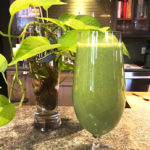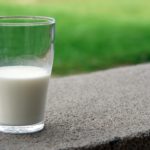
Sometimes I have a busy day planned and when I do I throw together a smoothie with lots of body to hold me until lunch. There is such an extensive variety of fruits and vegetables for you to use in your smoothies. I usually buy frozen fruit chunks to keep in the freezer and I also freeze my overripe bananas for the same purpose. Adding gluten free thick cut oats to my smoothies give them more body and a stick to your ribs feeling until lunch.
At just 33 calories, one cup of raw kale has:
• Nearly 3 grams of protein.
• 2.5 grams of fiber (which helps manage blood sugar and makes you feel full)
• Vitamins A, C, and K.
• Folate, a B vitamin that’s key for brain development.
• Alpha-linoleic acid, an omega-3 fatty acid.
Today’s smoothie was an apple and raisin flavored one to which I added some fresh kale leaves from the garden to give it some “green power”.
[gdlr_styled_box content_color=”#ffffff” background_color=”#3d6817″ corner_color=”#9ada55 ” ]Apple and Raisin Smoothie with Kale
1 1/2 ounces thick cut gluten free oats
2 tablespoons of raisins
1 apple, cored and cut into chunks
1 frozen banana
3 large kale leaves, washed and torn into pieces
1 generous cup of almond milk
Put all ingredients into a blender and blend until smooth.
Enjoy![/gdlr_styled_box]

